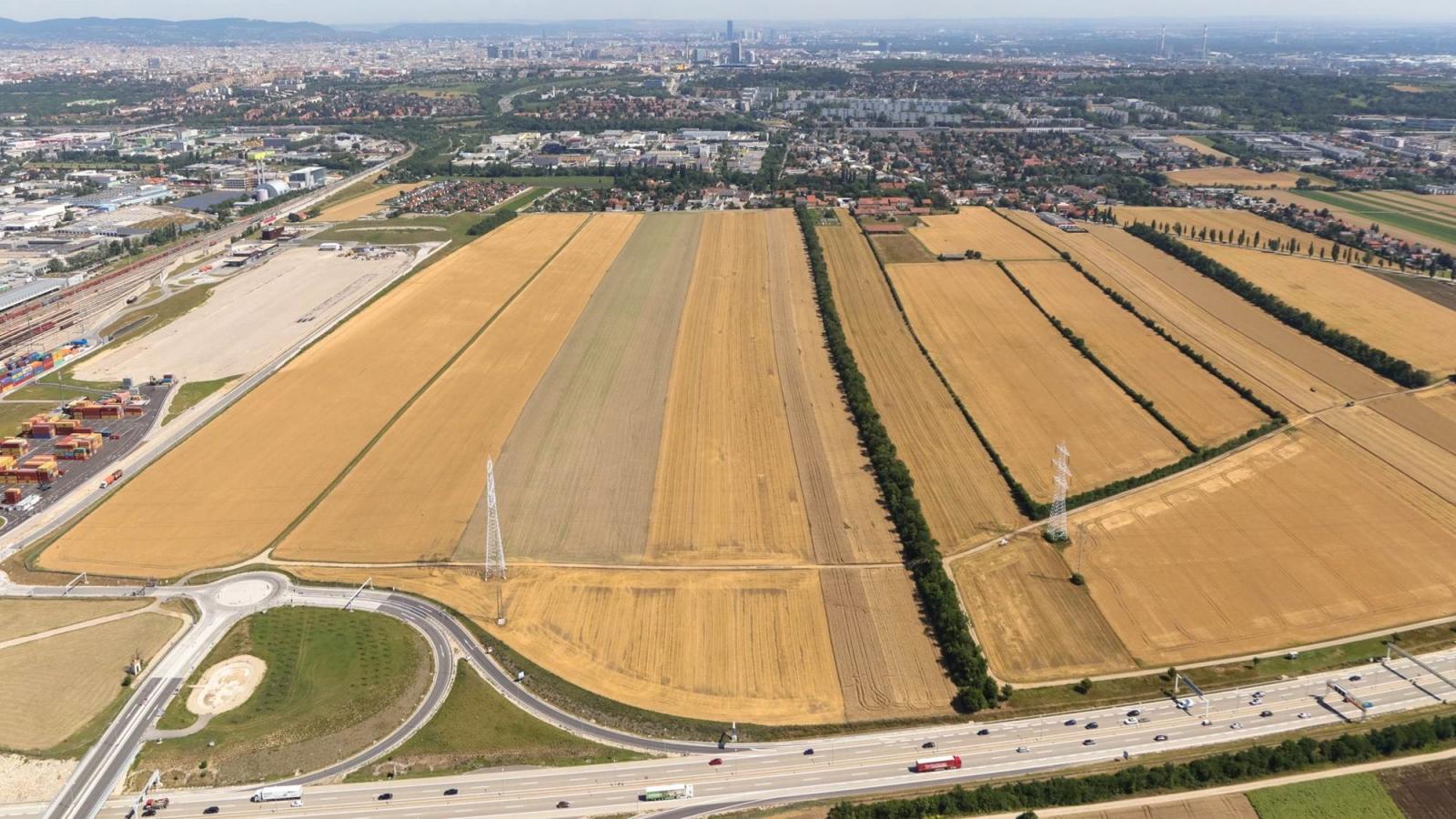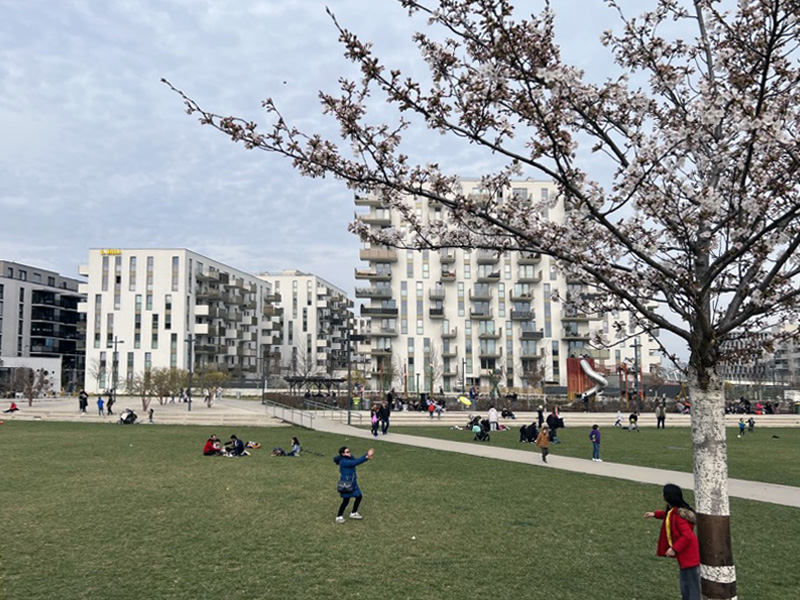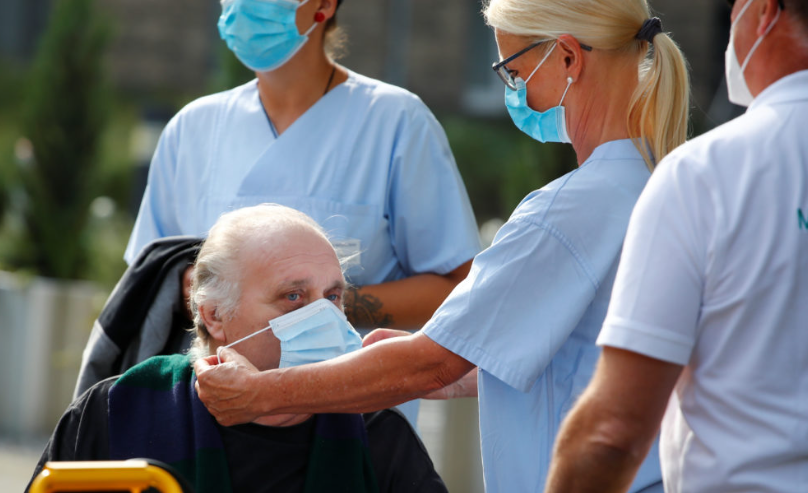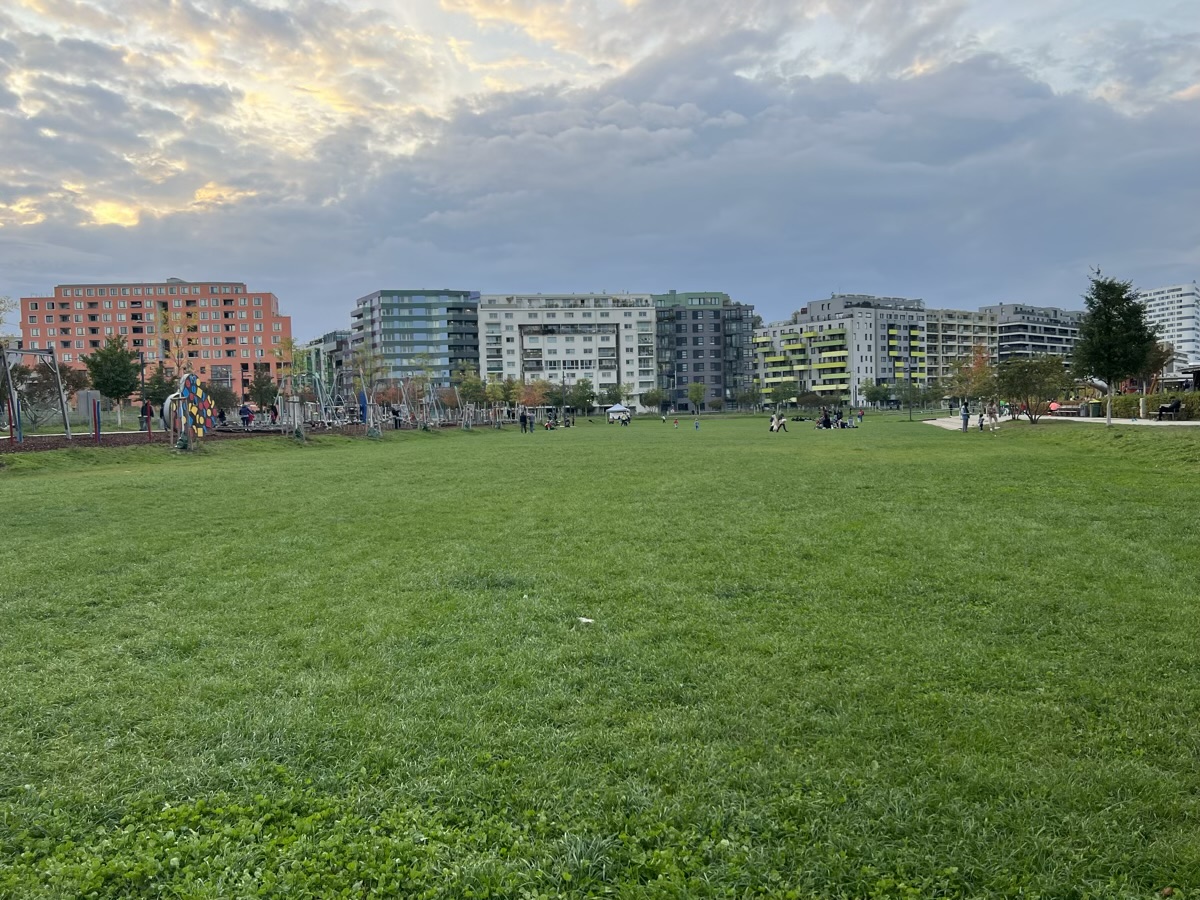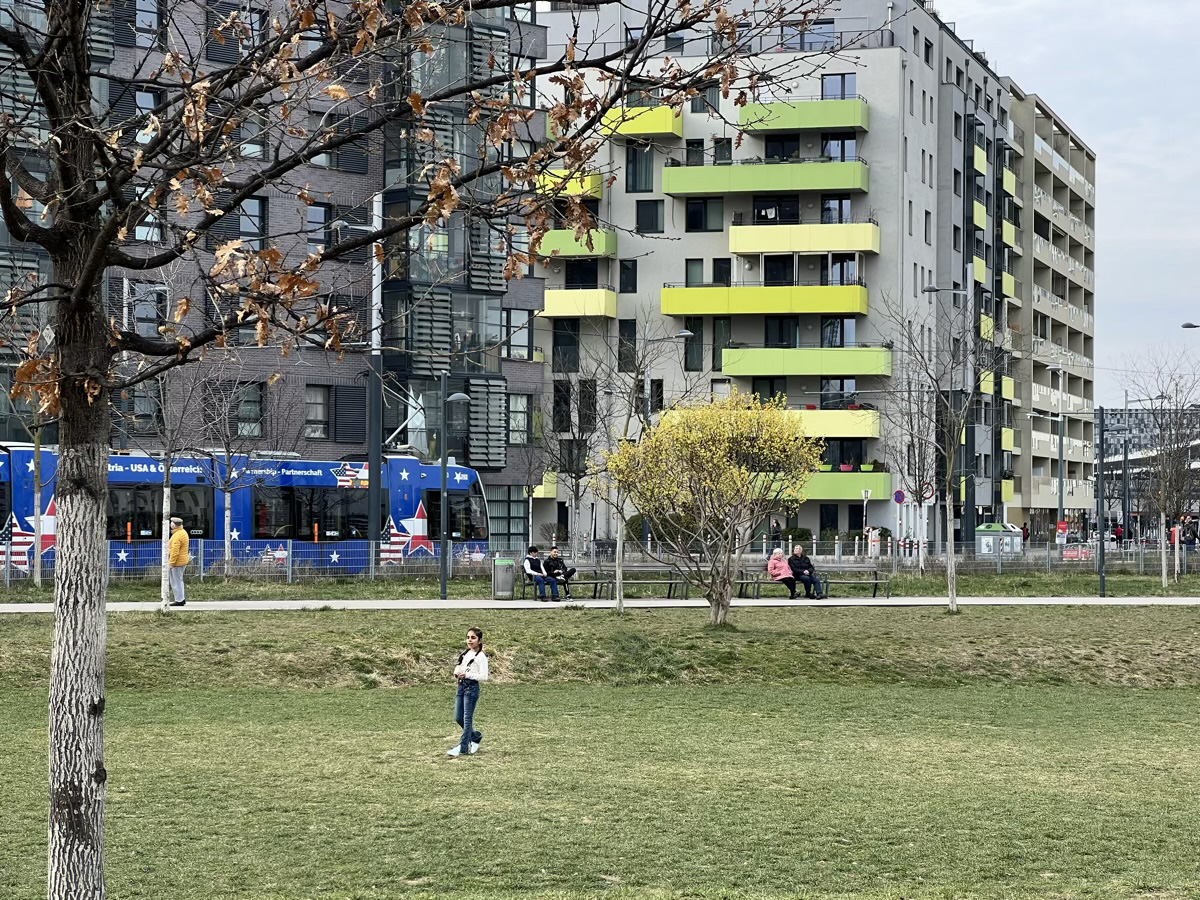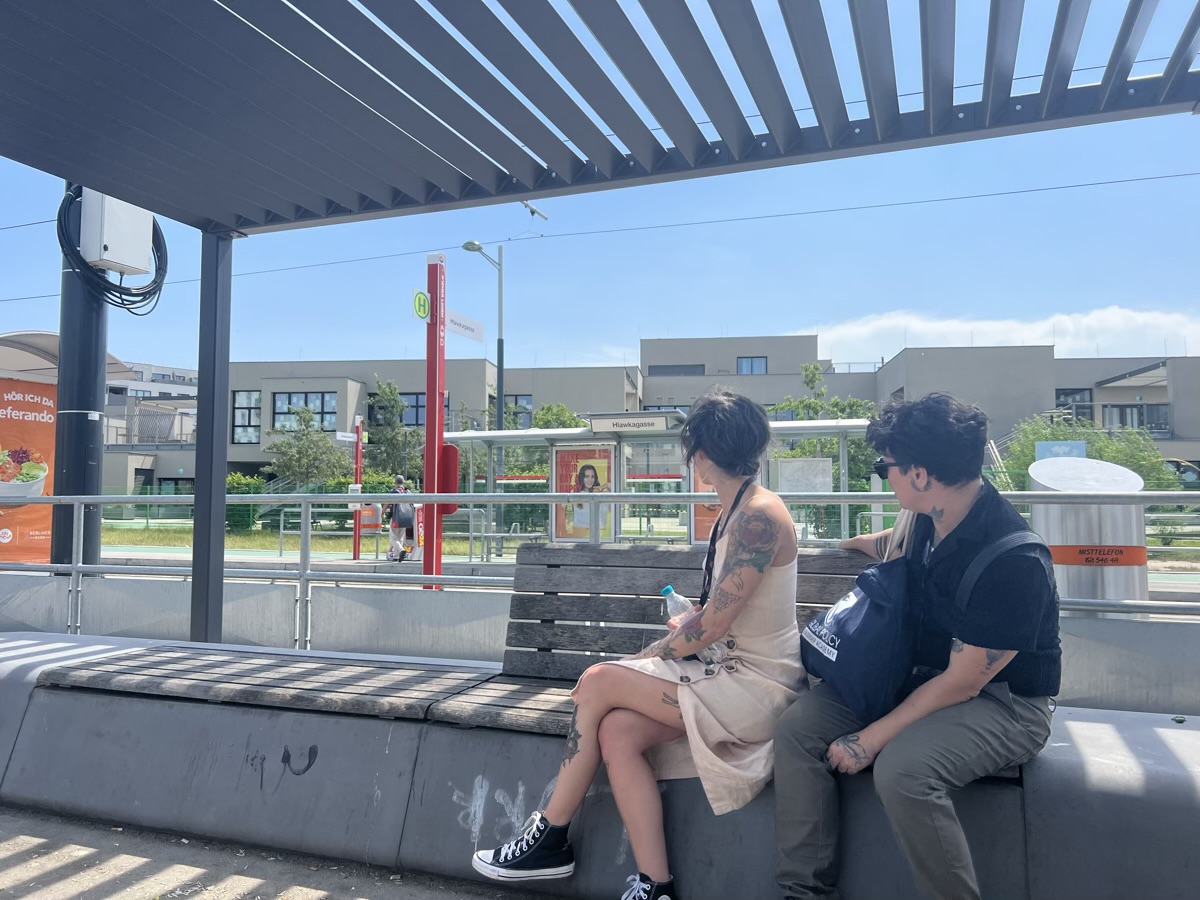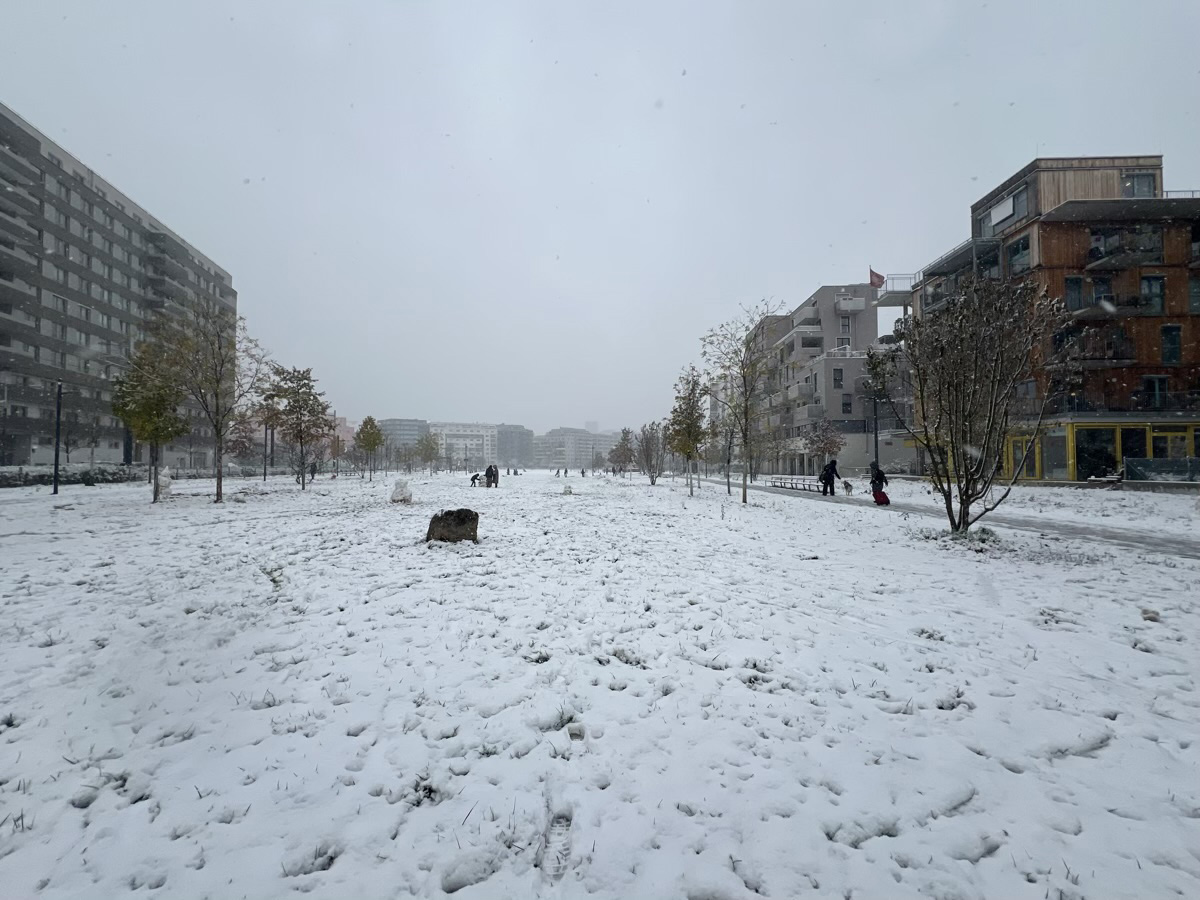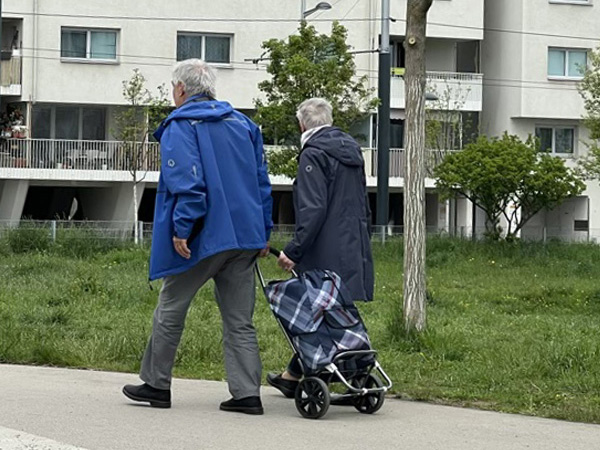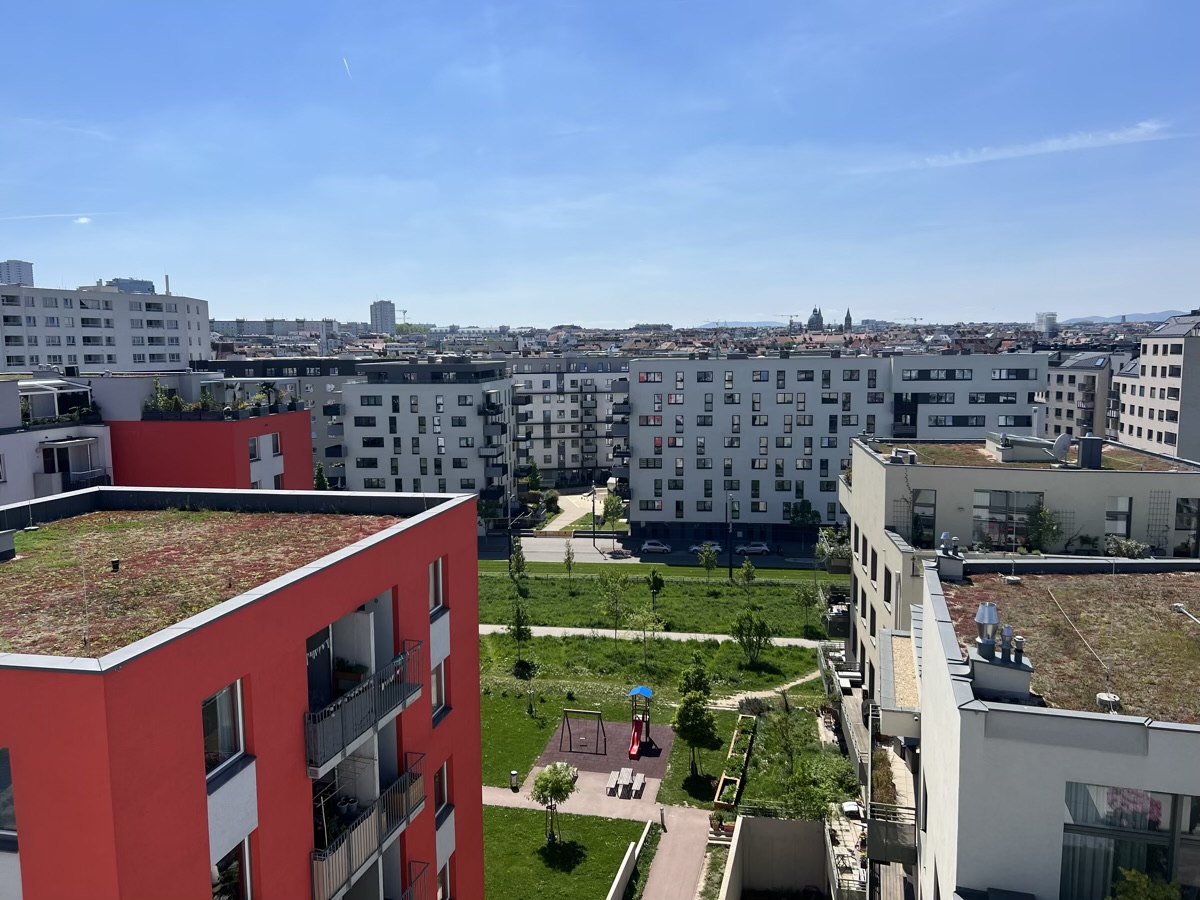










Vienna’s Land Bank and Urban Renewal Agency Wohnfonds Wien

In its role as a land bank, the agency actively buys and holds land for social housing, coordinates with the city on land use planning, and oversees developer competitions. In conjunction with the Vienna planning department and competitively selected master developers, Wohnfond Wien oversees the master planning of dense large-scale developments integrated with transit and amenities.
The Four Pillars of Developer Competition

- Social Sustainability: The project demonstrates the ability to support residents in maintaining a high quality of life by accounting for changing needs throughout their lifetimes and by using effective planning principles that promote social cohesion.
- Design: The project demonstrates high architectural quality and cohesion with the neighboring landscape.
- Environmental Sustainability: The project has abundant access to green/outdoor space and uses innovative technology to produce a high-quality building with a limited carbon footprint.
- Cost and Economic Feasibility: The project is able to control development costs and ensure financial viability in operation.
Housing Preservation
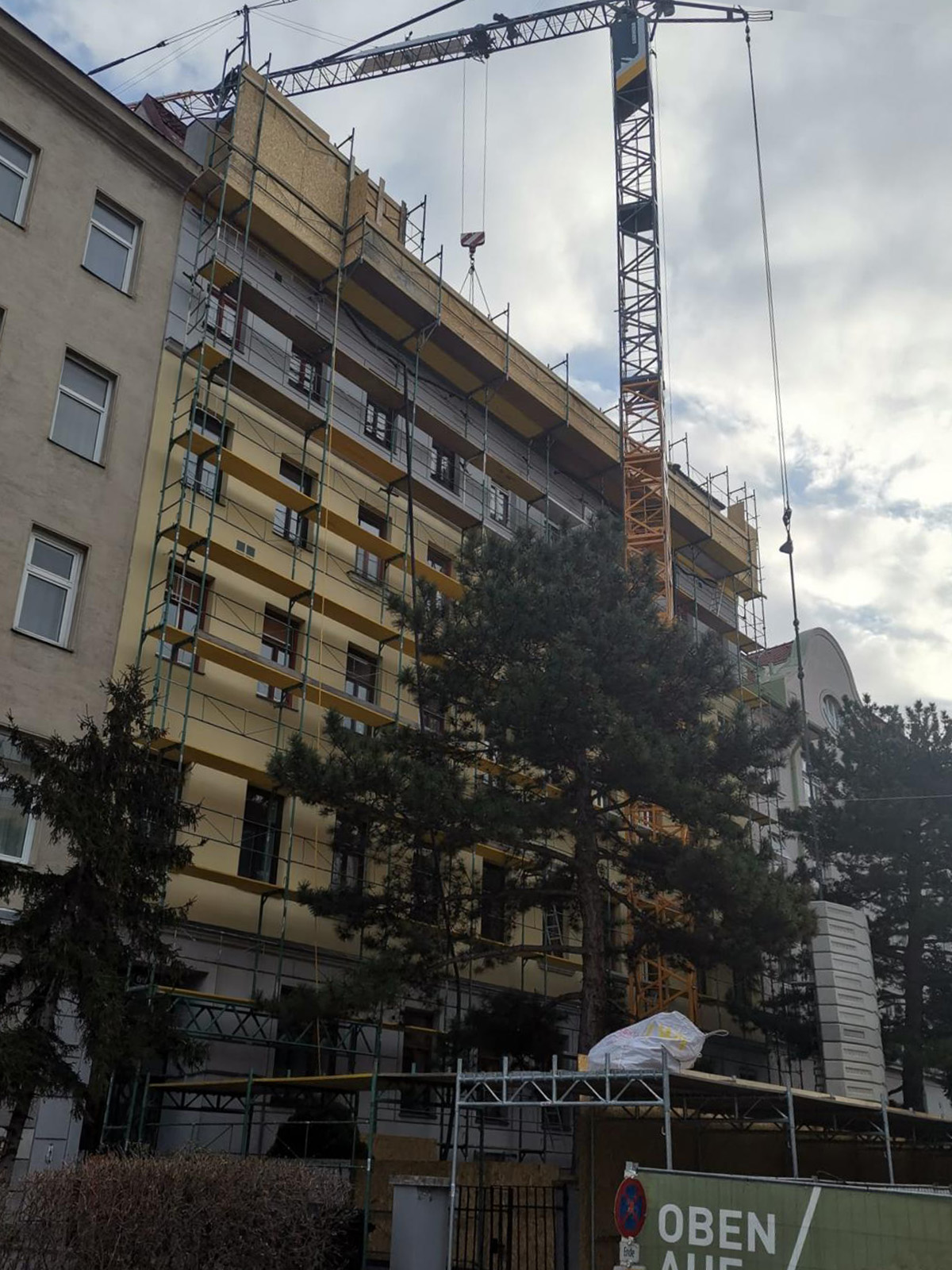
Priorities of the urban renewal program at Wohnfonds Wien include:
-
Decarbonizing older housing stock
-
Increasing the density of existing buildings
-
Adding affordability protections
-
Increasing quality of life
The urban renewal program applies to buildings that are at least 20 years old, will continue to be residential buildings, are compatible with land use and zoning plans, meet certain size requirements, are deemed to be economically feasible after renovation, and cannot support renovation through current rental income. Both social housing and private-market housing can access these services. Consulting services offered include various engineering services, maintenance work, special needs, and accessibility and climate-related initiatives. This rehabilitation program is also a big piece of the City of Vienna’s efforts to reach carbon neutrality by 2040. The rehabilitation includes incorporating more sustainable insulation and efficient energy sources and technology.
Environmental Sustainability

STEP is revised every ten years, and STEP 2035 is expected to be completed in 2024. STEP 2025 lays out several development standards, which include prioritizing urban expansion in areas with existing public transportation and, for areas without transit, prioritizing the development of new public transportation before developing new housing.
The plan encourages any land use to be multifunctional, specifying there should be no single-use space like parking lots or parking garages. STEP 2025 also includes standards for the use of polluted land and building upon existing infrastructure. In addition, urban planning and housing development initiatives are increasingly incorporating innovative technology within residential buildings. This includes systems to measure electricity usage, facilitate energy exchange between buildings to balance supply and demand, and engage tenants in energy-saving measures.
Sustained Funding
Vienna dedicates roughly €450 million ($504 million) of public funding annually for housing programs. Vienna currently finances social housing through two main public sources. €250M comes from a 1% federal income tax, and the remaining €200M is revenue from loan repayments, ground leases, and rental income from existing social housing stock. 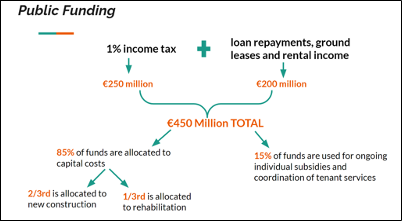 Half of the 1% federal income tax is paid by the employee and the other half by the employer. Each of the nine state governments in Austria has the authority to determine how their housing subsidies are expended, each deciding which types of development costs can be subsidized, who can receive funding, the loan terms, and more. Every three years, the federal government negotiates a 3-year budget to allocate tax revenue to the states. This income tax generates around €250 million a year for Vienna’s social housing program. An additional €200 million is generated through existing loan repayments, ground leases, and rental income.
Half of the 1% federal income tax is paid by the employee and the other half by the employer. Each of the nine state governments in Austria has the authority to determine how their housing subsidies are expended, each deciding which types of development costs can be subsidized, who can receive funding, the loan terms, and more. Every three years, the federal government negotiates a 3-year budget to allocate tax revenue to the states. This income tax generates around €250 million a year for Vienna’s social housing program. An additional €200 million is generated through existing loan repayments, ground leases, and rental income.
Vienna spends about 85% of its social housing budget on capital subsidies for buildings. The remaining 15% is for tenant-based rental assistance. Out of this 85% for capital subsidies, two-thirds is allocated for new construction and the remainder for rehabilitation. Limited Profit Housing Association (LPHA) developers also use bank loans and equity for the projects. The equity source for LPHA developers is a required revolving fund of their own equity that must be recycled into new projects. LPHA developers are obligated by law to direct all profits exceeding 2.5% towards their revolving fund that is used to continue the construction of new LPHA development projects. Please see the section on Limited Profit Housing and the key
Limited Profit Housing
Roughly half of Vienna’s social housing is privately owned by Limited Profit Housing Associations (LPHA) and is governed by the Limited Profit Housing Act (WGG). This differs from municipally owned social housing in the leasing and rent structures and serves as a financially efficient form of housing development that has become a major form of new social housing finance and development. In return for complying with the rigorous governance and auditing rules codified in the law, LPHAs are exempt from corporate taxes. Central features of the LPHA social housing scheme are as follows: 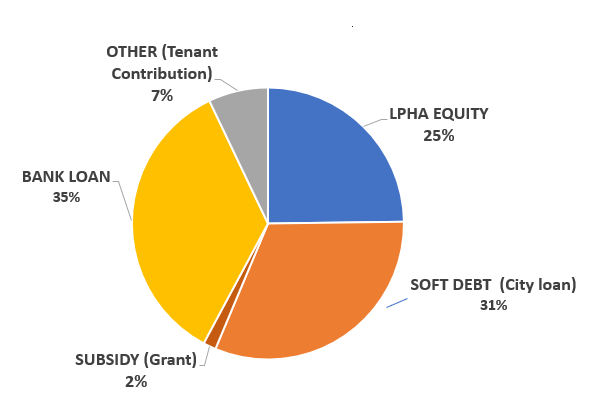
-
Cost-based rent: LPHA rents are calculated on a cost-basis, which means that rents can neither be set above nor below the costs incurred in the production, financing, and management of residential buildings (“cost rent”). Once the hard debt is repaid, rents are adjusted (usually downward) and are permanently rent-controlled.
-
Limitation of profits: LPHA law limits equity returns to 2.5%. All returns above this threshold must be placed in a revolving fund for future housing investment.
-
Revolving funds: LPHA equity shareholders (usually LLCs or Cooperatives) are obligated to reinvest any surplus returns into new housing construction. Furthermore, shares in an LPHA may only be sold off at the nominal value of the initial investment (the “nominal value principle”).
-
Personnel restrictions: LPHA developers must be independent of the construction industry in order to avoid conflicts of interest. This applies, in particular, to the officers of limited-profit companies. The salaries of officers are regulated in the WGG.
-
Limited business activities: LPHAs must primarily pursue business activities that are within the main scope as stipulated in the WGG, such as the construction, maintenance, and renovation of homes, and must do so in their own name. Other areas of business activity, such as the construction of business premises, garages, or community facilities, are allowed but must be secondary in volume. Some other projects require the permission of the respective regional government.
-
Audit requirements: All LPHAs must be members of an auditing association and are audited annually by independent auditors. The audit monitors compliance with the WGG, including the efficient and economic use of resources and capital, as well as the sound management of the organization.
-
Tenant Contributions to Equity: Up to 10% of the construction costs are paid by tenants as a “down payment” for a unit. This fund reduces the amount of debt needed in the project and provides funding for maintenance costs. Each year, 1% of the tenant’s contribution is drawn down for maintenance of the capital asset. If a tenant decides to leave the building, this equity contribution is returned minus 1% for each year of occupancy. If a tenant opts to purchase their rental unit, this fund is contributed to the purchase as owner equity. The equity contribution by the tenant is a barrier to entry for some households, however the banks and public sector work together to provide low cost loans that enable most to rent an LPHA unit. The city implemented SMART Units with low-cost caps on the equity contribution as a way to enable lower-income households to have access to new LPHA units.
-
“Smart Units”: Limited Profit Housing developers are obligated to construct one-third of all of their new social housing developments as “smart units,” which are smaller, more compact apartment units that have a lower financial barrier to entry. These units have the same number of rooms and share all the same amenities as the other units within the same building, they just have a smaller square footage, which allows for the rents and entrance down payment to be lower. Many students, young adults, seniors, and lower-income families live in smart units, and half of all SMART units are leased up by the City of Vienna through the same centralized platform that is used for the allocation of municipal housing. A family still needs a steady income to live in these smart units, but the rents are significantly less expensive than the private market and a cheaper option than the other LPHA units. The tenant contribution for smart units is capped by law at $5.95 dollars per square foot. If a household cannot afford this, the city provides no-interest loans for all limited-profit housing apartments, including smart units. Smart units range in size from 430 sq. ft., one-bedroom to 1,100 sq. ft., 5-bedroom units.
For more information please read Ensure Permanent Funding and Simplified Capital Stack.
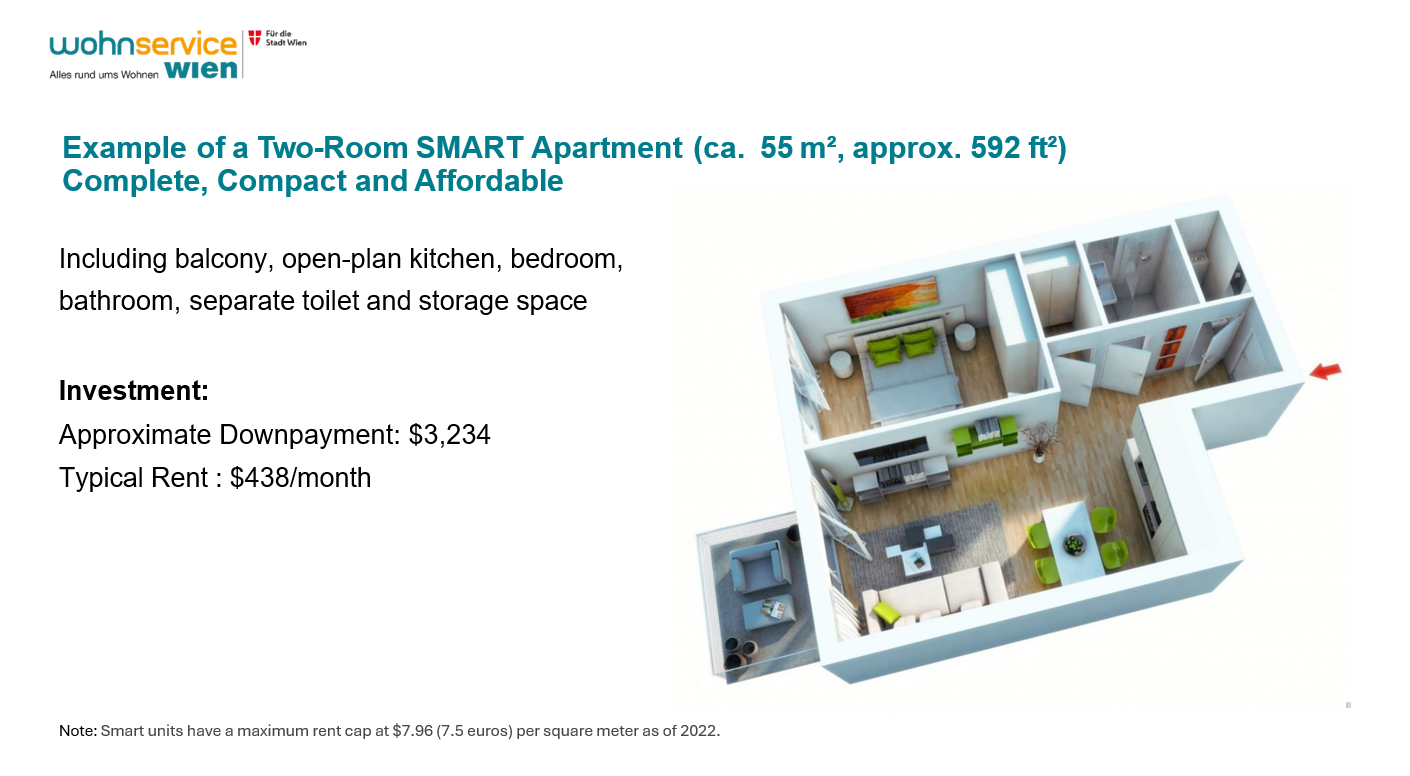
Tenant Services
Residential services and legal aid are overseen by a Municipal Agency known as WohnService Wien. This organization consists of three agencies: WohnBeratung Wien, which oversees housing navigation and lease up; Mieterhilfe, which oversees tenant and landlord legal assistance; and WohnPartner, which manages community services and dispute resolution in Vienna’s municipal housing.
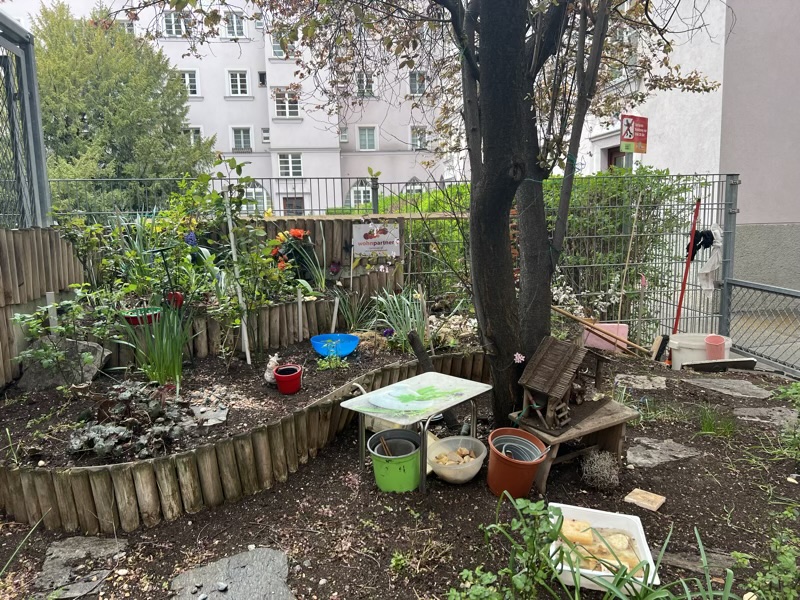
Lease Up of Social Housing
Wohnberatung Wien (Housing Navigation and Lease Up) is the municipal department within Wohnservice Wien that qualifies tenants for social housing and assists them with leasing the unit. Wohnberatung Wien manages leasing for all municipal housing and a portion of the Limited Profit Housing Association (LPHA) units. Half of all newly constructed “SMART units” – micro-units that are available as cheaper housing options for eligible tenants- are leased-up by the city. One-quarter of all retrofitted units are leased up by the city through Wohnberatung Wien. All other social housing units are leased up by the property owner.
Eligibility for Social Housing
Tenants of social housing must meet certain criteria such as income limits, citizenship or length of tenure in Vienna, and age. In general, everyone who earns at or below 200% of the Median Income is eligible to live in permanently rent-restricted social housing that has been funded with capital subsidies. However, only those with verified housing needs can qualify for municipally controlled units or access rental subsidies. Housing needs that receive priority for available social housing units include:
-
People living in overcrowded apartments
-
Single parents / divorced parents needing new housing situations
-
Young people moving into their first apartment
-
People with special needs
-
People older than 65 who receive caregiving supportive services
-
People who are older than 65 and currently live in a building without an elevator or without a bathroom and a toilet in the unit
-
People exiting incarceration
One Time Income Certification
A unique feature of Vienna’s social housing program is that the city’s income certification for subsidized units only happens once when families first move into a unit. Residents are never required to move out, even if household incomes rise over time. This practice serves as a form of economic and housing stability and results in a substantial number of moderate-income residents living in rent-restricted subsidized housing. The ensuing mix of households at different income ranges reduces the stigmatization of social housing as housing for the poor and creates a positive effect on social integration and well-being. The proactive development policies that continue to increase the supply of social housing–including units for lower-income households–mitigate concerns that middle-class households crowd out lower-income households.
Services that enhance social cohesion among residents are provided through a department called Wohnpartner (Housing Partner) and include community building and organizing, facilitating participation and a sense of belonging, and conflict mediation. Wohnpartner upholds tenant participation, decision-making, and empowerment as their core values. Specific activities led by Wohnpartner include resident welcome committees, tutoring, community gardening, intercultural exchanges such as cooking classes, and German language training. Department staff also support residents through conflicts by creating spaces for dialogue, creating opportunities for residents to self-organize, and encouraging residents to take ownership of their living situations.
Tenant Protections
The MieterHilfe (Tenant Assistance) department offers legal services, including free advising centers with personal advice and telephone advice options for both residents and landlords. Additionally, legal cases that may set precedents for national or city-wide housing law are supported by lawyers at the Chamber of Labor, and free legal services are given out within the Chamber of Labor to lower-income families as well as through the lawyers association of Vienna.
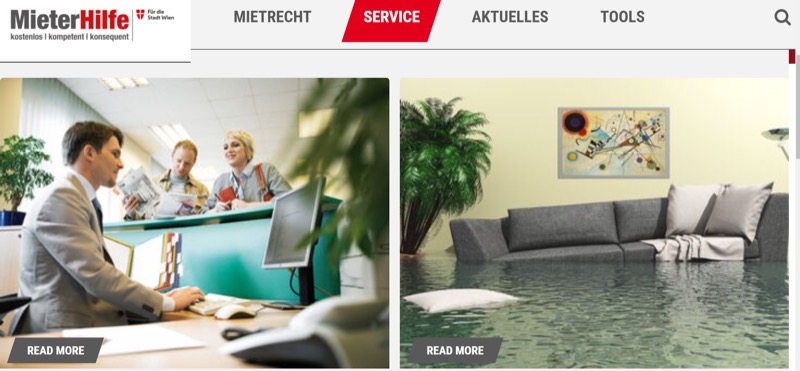
Legal Representation, Counseling, and Emergency Support
Legal Counseling services are provided to all tenants regardless of whether they live in social housing or private market housing. Eviction cases in the City of Vienna go through the district court, where free legal representation is available for lower-income families. A federal legal aid program, “Verfahrenshilfe,” sometimes provides legal aid to low-income households, and to keep up with the demand for free legal representation, all lawyers in Austria are required to represent lower-income households at some point in their careers in court for eviction cases and other legal matters. Making legal aid accessible to all tenants, regardless of income, has played a crucial role in eviction prevention in the city. Short-term subsidies are available to protect low-income households from losing their housing during a financial or family crisis; however, there is a limit to how much and how many times subsidies can be requested per household. People whose income is not high enough to pay rent are also supported through counseling to apply for municipal housing or a smart unit if cheaper rent would allow for more housing stability.
Tenancy Laws in Vienna
Vienna’s tenancy laws are complex, but in general, about 66% of Vienna’s rental housing is rent-controlled or permanently restricted as social housing with strong limitations on rent increases. The tenancy laws are, for the most part, established at the federal level and regulated locally. Privately owned rental properties built before 1956 and leases executed before 1994 are subject to rent control. Municipally-owned social housing and LPHA-owned social housing are permanently rent-restricted with open-ended lease contracts, inheritable leases, and numerous counseling and access to eviction protections. Tenants who live in private buildings constructed after 1956 or who have a lease that started after 1994 have relatively few tenant protections. According to the Chamber of Labor, in 2022, 32% of Vienna’s total housing stock experienced a rental increase of more than 20%. All of these leases were private market rents that did not have rental limit protections. All landlords, however, must meet basic quality and habitability standards as regulated by the federal law described below, and just-cause eviction protections. All leases have a minimum lease term of 3 years.
Fixed Term Leases vs Open Ended Leases
Labor Advocacy
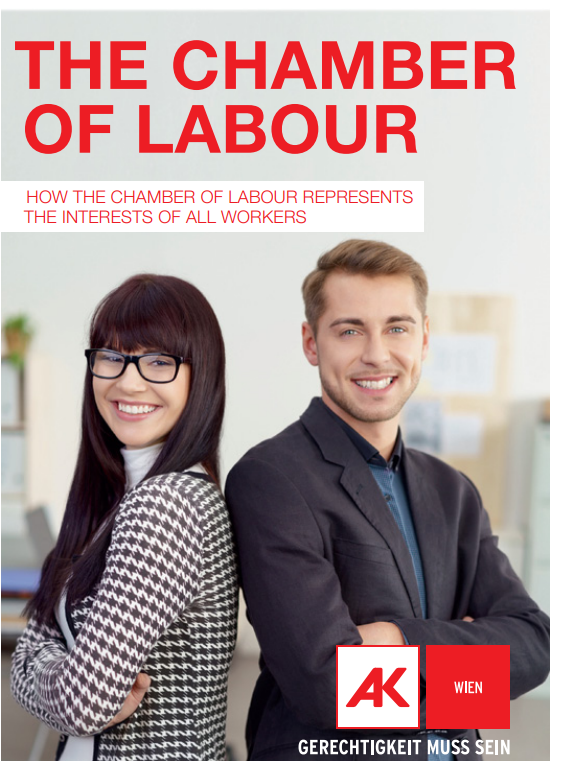

Construction Innovation
Innovative housing construction technology is frequently utilized to meet the city’s growing housing demand. Austria has a long tradition of forestry and woodworking and has become one of the leading countries for innovation in cross-laminated timber and mass timber construction.
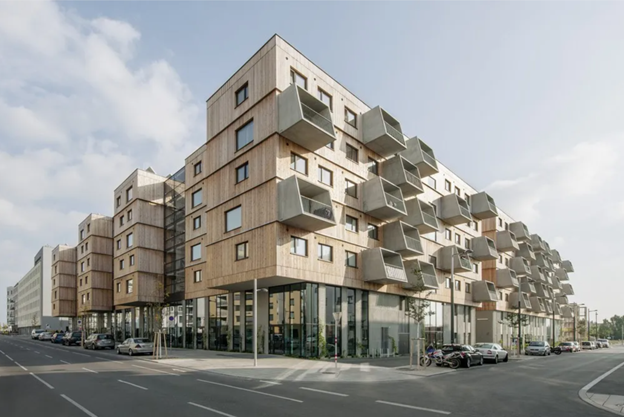
Housing Industry Advocacy
The Chamber of Commerce in Vienna plays a crucial role in representing and advocating for the interests of the business community, including industries related to housing construction and trades. With its significant membership base of 144,000 companies, the chamber serves as a formidable voice for businesses in the region.
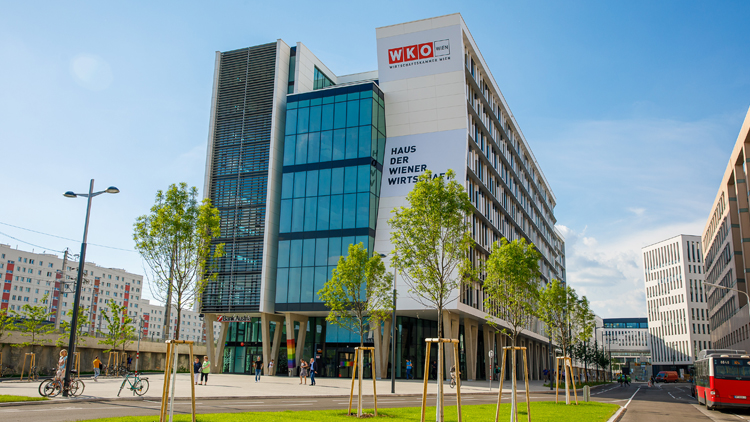
Housing Policy Research
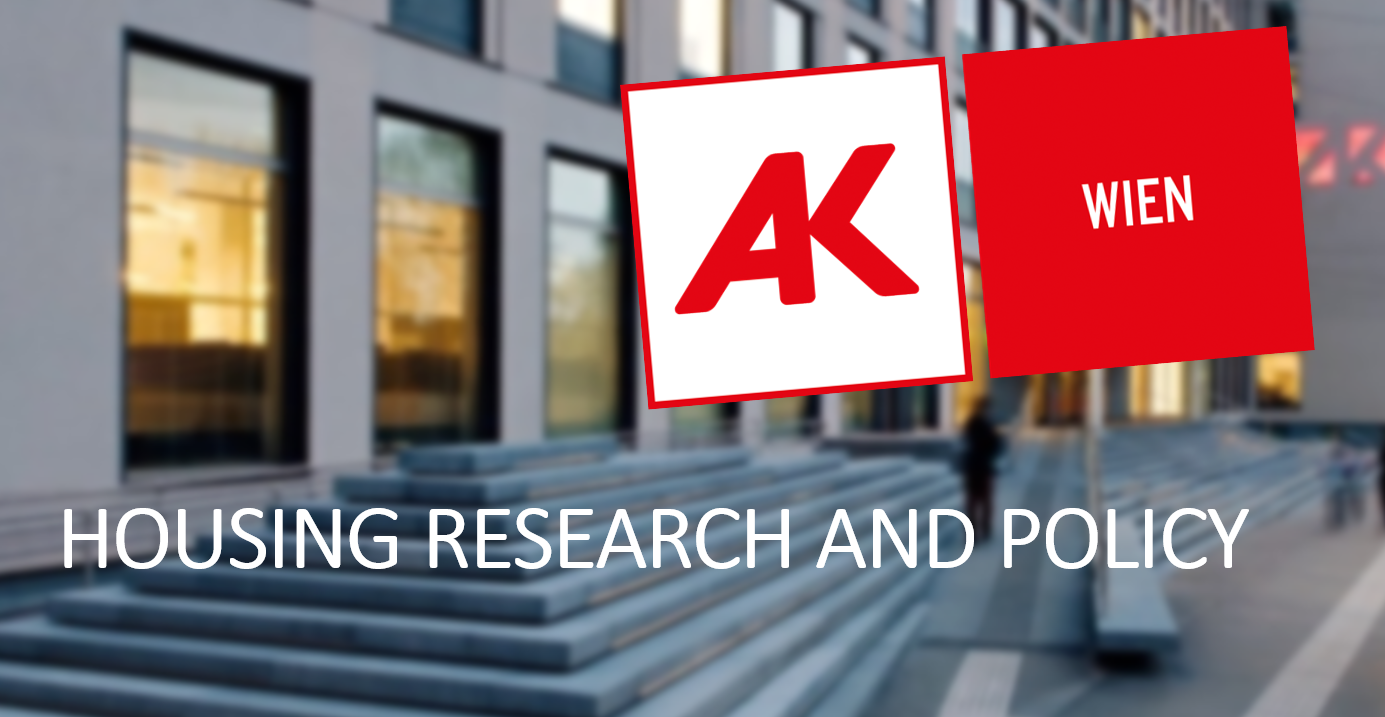
This research is primarily conducted by universities, the City of Vienna’s research office, and the Chamber of Labor. These entities collaborate on data and research to uphold the shared objective of maintaining stable and accessible affordable rents for the majority of Vienna’s population. Research topics include current housing needs, renter protections, production, greenhouse gas emissions, and land prices, among others, as produced by the city and Chamber of Labor in recent years.
Transit Oriented Development
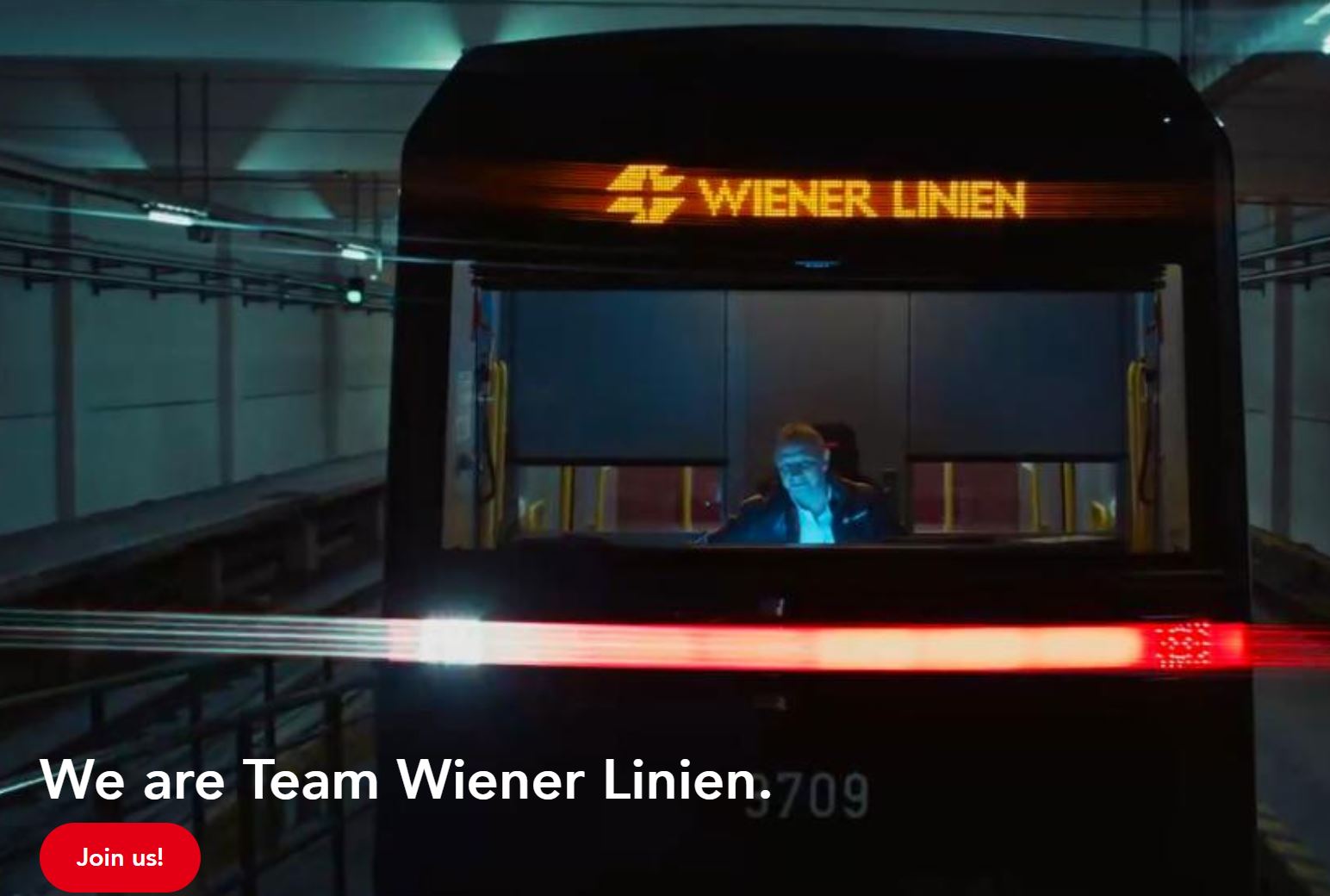
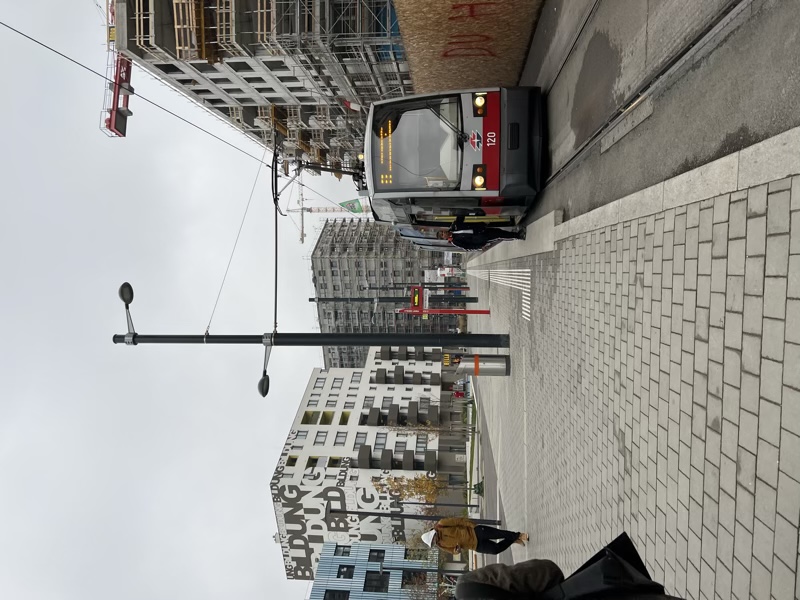
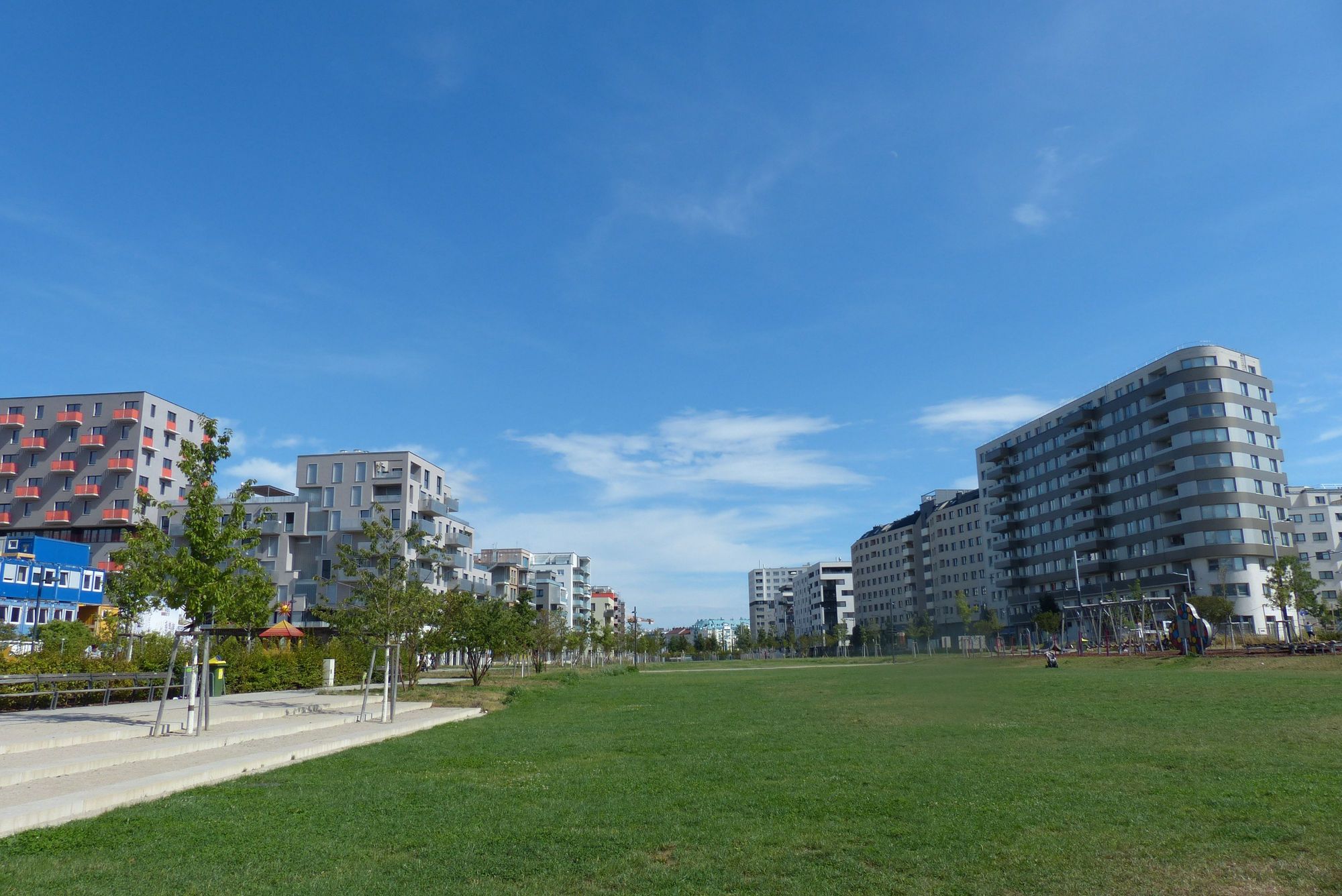
Completed in 2023, the Sonnwendviertel neighborhood is one of Vienna’s exemplary large-scale integrated land use planning and mixed-income developments that includes over 50% social housing. The master plan was developed in 2004 at a time when Venna’s population was projected to outpace the supply of housing. Ten teams of architects from Austria and around the world were invited to participate in a competition to develop an infill area located adjacent to Vienna’s central train station. Built on a former federal railway, the neighborhood includes 5,500 social, cooperatively, and privately owned housing units surrounding a 17 acre park. It also provides 20,000 new jobs and includes a primary and middle school, community centers, multiple supermarkets, health clinics, and restaurants.
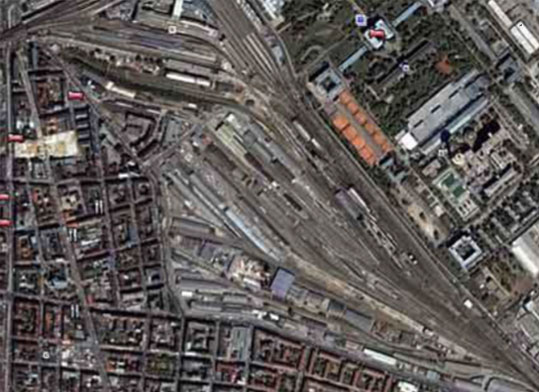
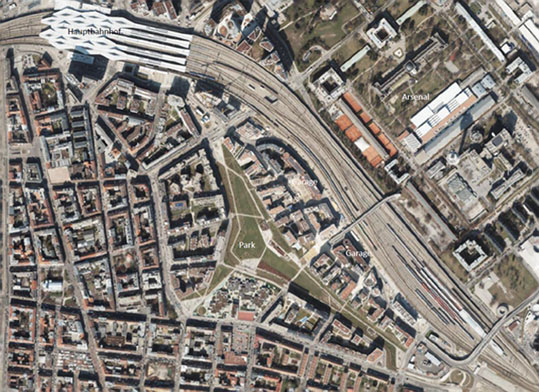
Vienna’s new housing developments are always centered around a high-frequency transit stop, and the Sonnwendviertel neighborhood includes two tram stops, a nearby metro stop, a public rental bike station, and is a 15-minute walk from the city’s central train station. The quality of the buildings and public infrastructure is very high and constructed using sustainable development construction methods. In many cases the social housing is of an even higher quality and creative architectural design than the private housing. The surrounding neighborhood is historically a lower-middle-class neighborhood, with a significant amount of rehabilitated older municipal housing stock. The increase in surrounding property values due to the new construction and the accompanying threat of gentrification is mitigated by the high amount of low-moderate income social housing available for rent in the new project. This master-planned mixed-income housing development is a good example of the City of Vienna developing housing for a broad mix of incomes.
On weekends, the 17-acre park is frequented by families living both in new buildings and in the surrounding community, which includes many 1st and 2nd generation immigrants from outside the EU. The park, as well as the children’s primary school, serves as a beautiful space of cross-cultural, multi-generational connection between kids, seniors, and families of both Austrian and immigrant backgrounds, which would only be possible through the City of Vienna’s intentional social mixing and mixed-income housing development policies and decisions.

